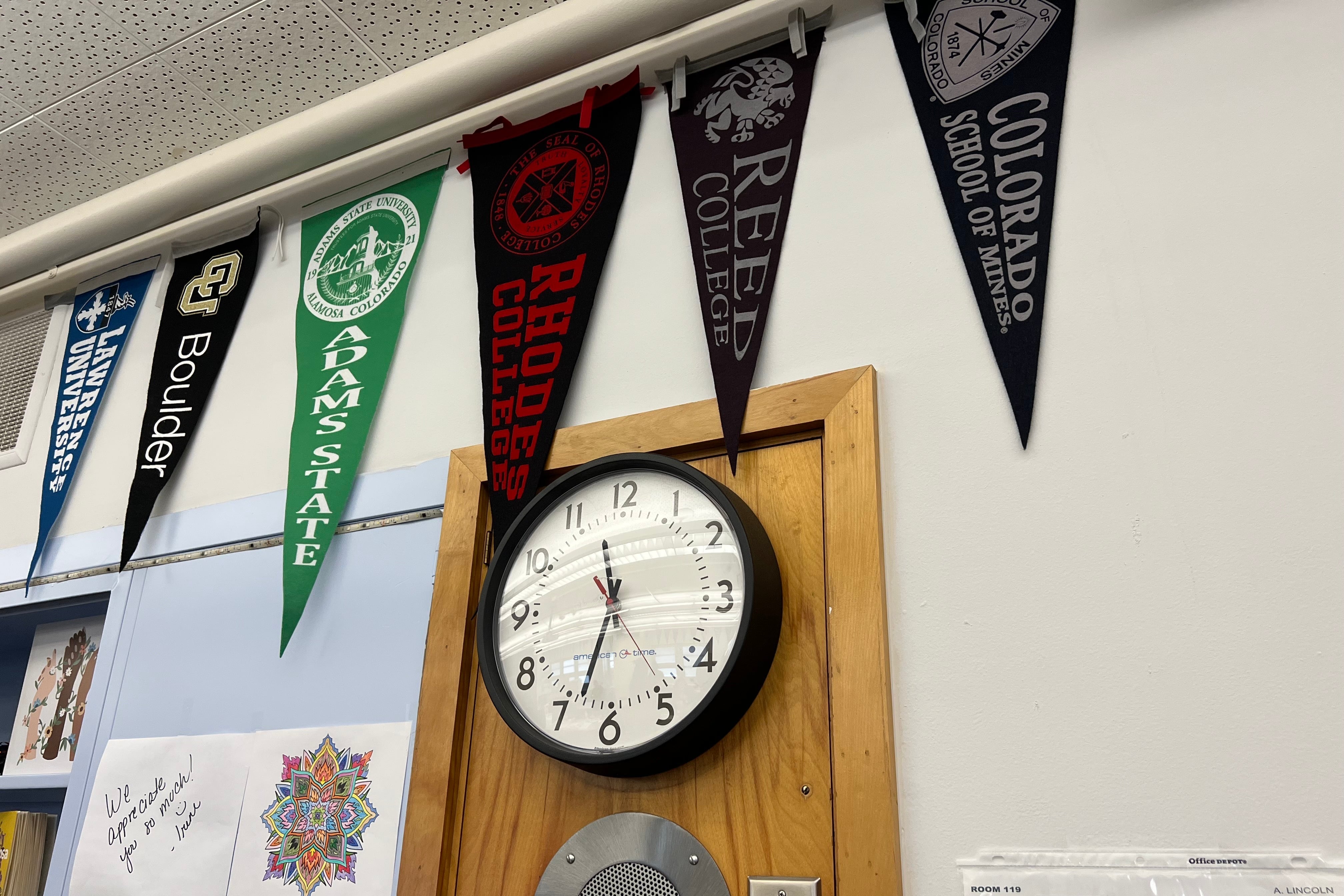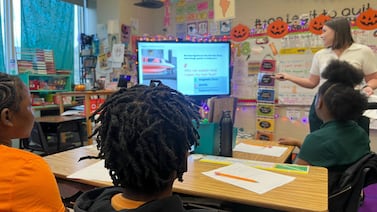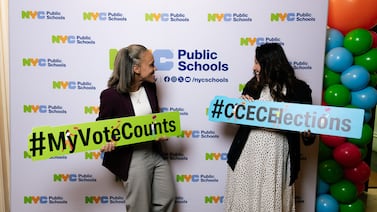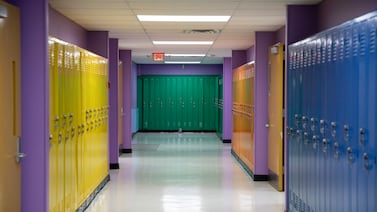Sign up for Chalkbeat Colorado’s free daily newsletter to get the latest reporting from us, plus curated news from other Colorado outlets, delivered to your inbox.
More Colorado schools and districts are earning higher marks on the state’s annual performance ratings, according to preliminary data published Tuesday.
The ratings, largely based on scores from standardized state tests administered every spring, improved but are not yet better than before the pandemic. The trend is similar to state test score data released by the Colorado Department of Education last month, which showed student achievement slowly recovering from declines after the pandemic disruptions of 2020.
Overall, the list of districts on the state’s accountability clock — the watchlist where districts land for low performance — has been cut in half from 22 to 11. Aurora Public Schools, one of the largest districts that had earned a low rating last year, has quickly bounced back and is off the list based on an improved rating for 2024.
And at the school level, 83% of schools earned the two top ratings of performance or improvement in 2024, compared to 78% in 2023.
The state uses the ratings to identify schools and districts with persistently low academic performance and provide them with more funding and scrutiny. By law, the State Board of Education must order schools and districts that have had more than five years of low ratings to undergo changes in an effort to improve student performance. Those changes could include closing a school or requiring a struggling district to merge with a better-performing one.
But in recent years, the State Board has backed off ordering more serious interventions. Instead, it has largely rubber-stamped schools’ and districts’ own improvement plans as long as they meet the parameters of the state’s accountability law.
Likelihood of improving is high, but some schools struggle
Among notable improvements, Denver’s Manual High School earned significantly higher points compared to last year and will be able to exit the state’s low-performance watchlist.
But a handful of chronically low-performing schools and districts continue to struggle. That includes Denver’s Lincoln High School, which entered the low-performance list at the same time as Manual.
Colorado’s accountability system places districts and schools on the accountability clock when they earn one of the lowest two performance ratings. If a district or school remains on that list for five years in a row, the state must step in and order an improvement plan. The state also provides more funding for schools on the clock, although officials on Tuesday said the need always exceeds the funding available.
Many of the schools and districts that end up on the clock are those with high numbers of Hispanic students, students from low-income families, or students with disabilities. But an audit in late 2022 found that overall the state’s system was still reasonable.
Still, new members on the State Board have sided with community members who criticize the state’s system as punitive and inequitable.
Although Colorado statute has not changed the state’s accountability system, State Board members more recently have taken a different approach of asking state officials to collaborate with districts and monitoring those schools and districts.
In 2022, the state had escalated and exhausted its options for Adams 14 by ordering reorganization for the district, which has been on the clock for more than 10 years. But, after community pushback, last fall the state backed down.
This year, ratings show student performance in Adams 14 has once again decreased, and the district this year earned the fewest points of all districts in the state. At the school level, each of the district’s schools earned fewer points on the state’s report card, compared to last year, and now three elementary schools — Alsup, Central, and Rose Hill — earned the lowest rating possible.
Behind Adams 14, which is now officially on “year 11″ of the clock, only one other school in the state has had as many low ratings: Risley International Academy of Innovation, a middle school in Pueblo 60. This year, Risley also continued to earn one of the lowest ratings in the state, although the school earned 40% of possible points on the report card, more points than the 38% it earned last year.
Among the large school districts in the state, most districts had stable numbers of schools on the clock, with some of their schools improving and others earning lower ratings and taking their place on the list. Jeffco Public Schools, however, has eight, or twice as many schools as last year, on the clock.
State officials say about 60% of schools that enter the clock will exit right away with additional support and focus.
In Aurora, Aurora Central Campus, formerly Aurora Central High School, continues to face low state ratings. Last year, the school had insufficient data to earn a score. This year, the school earned 49.2% of possible points — enough to earn a higher rating and start to exit the clock — but low test participation means the school will continue to earn a low rating for a 10th year.
Schools and districts now get a chance to appeal their ratings if they can present additional data to warrant a change. After considering appeals, the state will finalize the ratings later this fall.
Yesenia Robles is a reporter for Chalkbeat Colorado covering K-12 school districts and multilingual education. Contact Yesenia at yrobles@chalkbeat.org.







